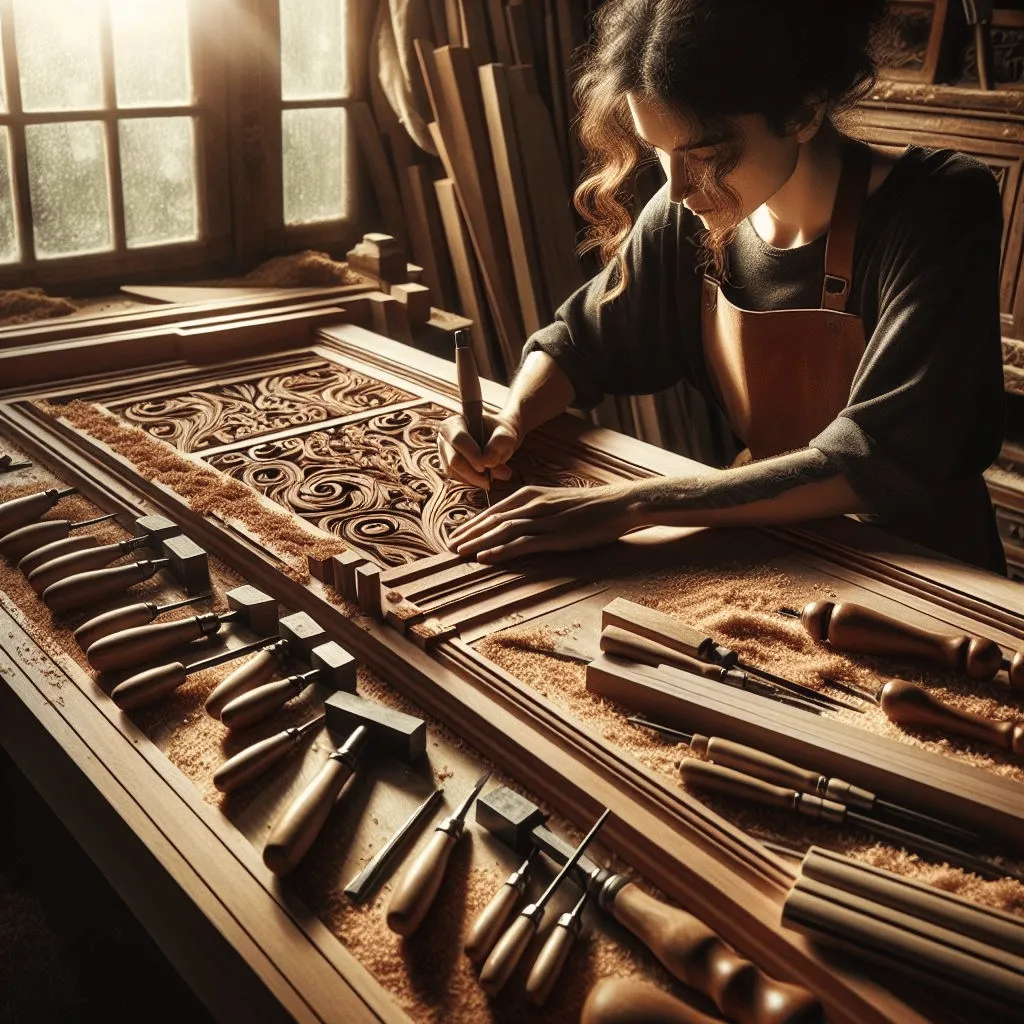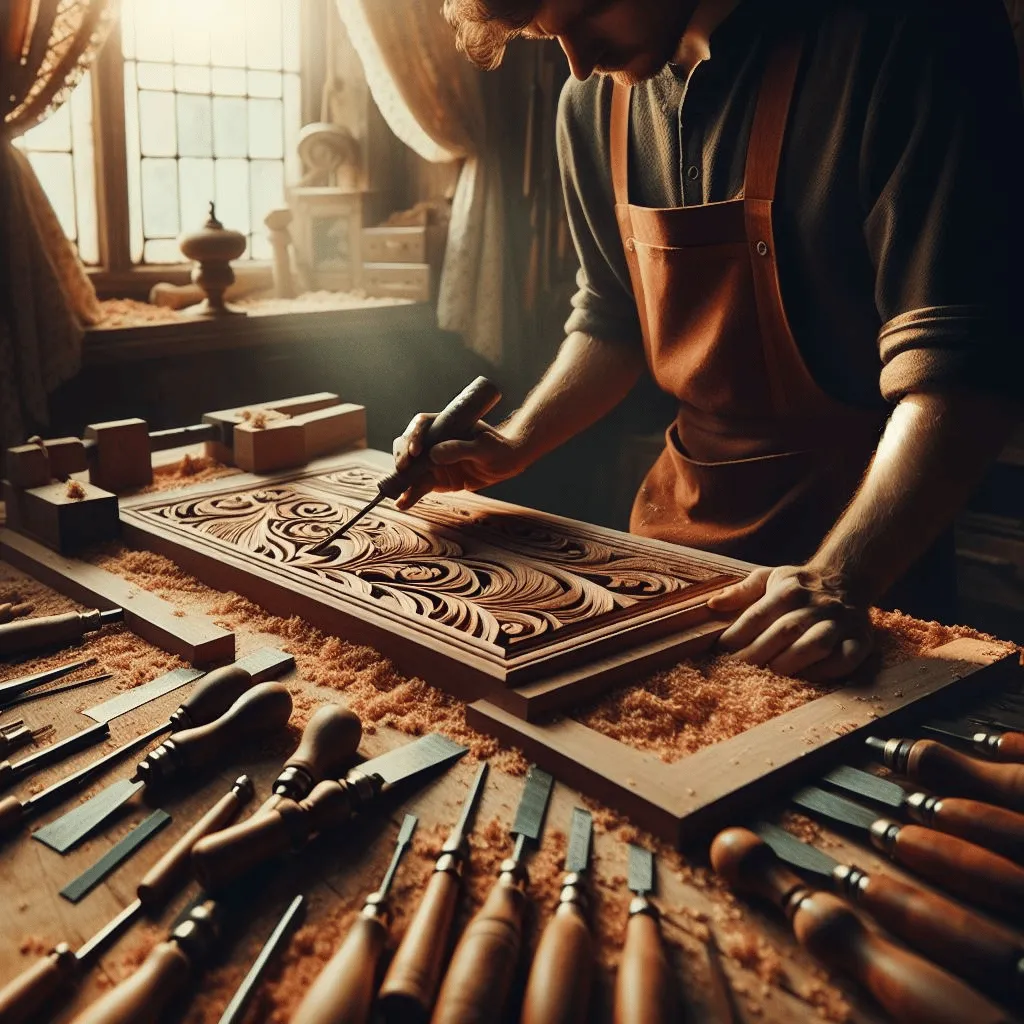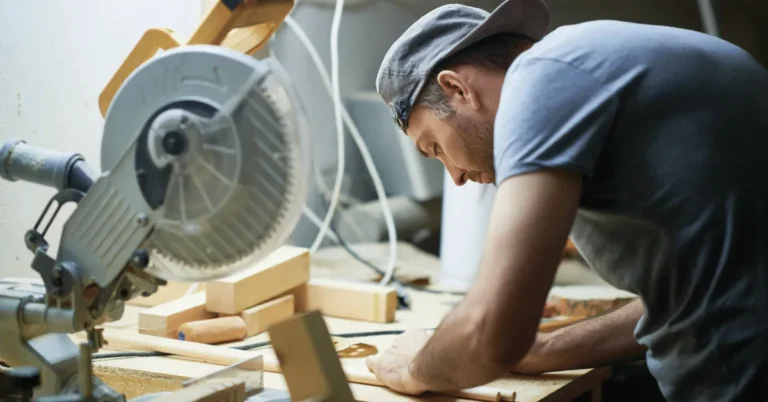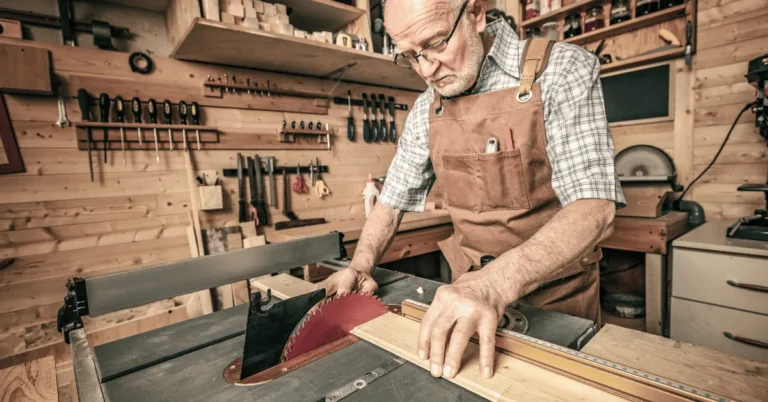Woodworking is a craft that has stood the test of time. From ancient civilizations to modern DIY enthusiasts, the art of shaping wood into beautiful creations has always held a special place in our hearts.
And while power tools have undoubtedly made their mark in the woodworking world, there’s something undeniably satisfying about working with hand tools.
But with so many different types of hand tools available, it can be overwhelming for beginners to know where to start. Fear not, fellow craftsperson!
In this article, we’ll be exploring the six classes of woodwork hand tools, giving you a handy guide to help you navigate this world of sawdust and splinters.
What are the six classes of woodwork hand tools?
Woodworking is an art form that requires skill, precision, and the right set of tools. While power tools have their place in the workshop, there’s something magical about working with hand tools.
They allow you to connect with the wood on a deeper level and unleash your inner craftsman.
1. Measuring and Marking Tools
Before you can start transforming a piece of wood into a work of art, you need to measure and mark it accurately. This is where measuring and marking tools come in handy.
These tools include tape measures, rulers, squares, marking gauges, and pencils. They ensure that your cuts are precise and your joints fit perfectly.
2. Cutting Tools
Cutting tools are the backbone of woodworking. They allow you to shape and manipulate wood with precision.
The most common cutting tools include hand saws, chisels, carving knives, coping saws, and block planes. Each tool has its own unique purpose, whether it’s making straight cuts, carving intricate details, or smoothing rough surfaces.
3. Shaping Tools
Once you have cut your wood to size, it’s time to shape it into the desired form. Shaping tools help you create curves, bevels, and chamfers.
Some essential shaping tools include rasps, files, spokeshaves, and draw knives. These tools allow you to add intricate details and give your projects that extra touch of craftsmanship.

4. Joinery Tools
Joinery involves skillfully connecting two pieces of wood to craft robust and enduring joints. Essential for fashioning mortise and tenon joints, dovetail joints, and various other joint types, the use of precision joinery tools is paramount.
Some common joinery tools include chisels, mallets, hand planes, and coping saws. With these tools, you can create joints that not only look beautiful but also stand the test of time.
5. Finishing Tools
Finishing is the final step in any woodworking project. It’s where you add the finishing touches and bring out the natural beauty of the wood. Finishing tools include sandpaper, scrapers, files, and brushes. These tools help you achieve a smooth and flawless finish, ensuring that your work of art shines.
6. Holding and Clamping Tools
Woodworking often requires holding pieces of wood together while you work on them. Holding and clamping tools come to the rescue in such situations.
These tools include clamps, vises, bench dogs, and holdfasts. They keep your workpiece secure and stable, allowing you to focus on the task at hand without worrying about things moving around.
Read More: What are The Different Uses of Hand Tools? (2024)
How many classifications of woodwork hand tools are there?
Woodworking is a craft that requires skill, precision, and a whole arsenal of tools. From cutting and shaping to joining and assembling, there are numerous tasks that can be accomplished with the help of hand tools.
But just how many classifications of woodworking hand tools are there? Let’s dive into the fascinating world of woodworking hand tools and explore the nine main classifications.
Saws
First up, we have saws. These trusty tools are used for cutting wood in various ways. With different teeth configurations, saws can tackle tasks like ripping, crosscutting, or shaping wood. Whether you need to make a straight cut or a fancy curve, there’s a saw for every occasion.
Planes
Next on our list are planes. No, we’re not talking about flying vehicles here. Planes are used to smooth and shape wood by shaving thin layers off the surface. With varying blade shapes and sizes, planes allow you to create beautifully finished surfaces.
Chisels
Carving, shaping, and removing wood are made easy with chisels. These versatile tools come in various blade sizes and profiles, allowing you to create intricate designs or simply remove excess material. Just be careful not to accidentally chisel away your fingers!

Boring Tools
Creating holes in wood is a breeze with boring tools. From drills to bradawls and augers, these tools come in handy when you need to make holes of different diameters and depths. Whether you’re building a birdhouse or a bookshelf, boring tools are a must-have.
Fixing Tools
Joining and assembling wood is where fixing tools shine. Nails, screws, clamps, and adhesives all fall into this category. They help hold everything together, ensuring that your woodworking projects stay intact.
Marking Out Tools
Precision is key in woodworking, and marking out tools help you achieve just that. From rulers and squares to marking knives and gauges, these tools ensure accurate measurements and markings on your wood.
Workshop Equipment
Woodworking is not just about the handheld tools. Workshop equipment such as benches, vises, and sawhorses provide support and stability while you work. They’re like the unsung heroes of the woodworking world, quietly doing their job in the background.
Sharpening Tools
Keeping your cutting edges sharp is essential for efficient woodworking. That’s where sharpening tools come in. Whetstones, honing guides, and strops help maintain the sharpness and effectiveness of your tools, ensuring clean and precise cuts.
Miscellaneous Tools
Lastly, we have the miscellaneous tools. Rasps, files, scrapers, and other specialized tools that come in handy for specific tasks. They may not fit neatly into the other classifications, but they’re still essential tools for any woodworking enthusiast.
It’s crucial to understand that these classifications are flexible and not rigidly defined. Some tools may fall into multiple categories, blurring the lines between classifications.
Additionally, there are countless specialized hand tools that go beyond these nine classifications, catering to specific woodworking needs.
So, whether you’re a seasoned woodworker or just starting out, the world of woodworking hand tools is vast and exciting. Each tool has its own unique purpose and charm, waiting to be wielded by the creative hands of a craftsman.
Read More: Why Use Hand Tools For Woodworking? (2024)

Which class of hand tools is best for woodworking?
Let’s explore the best class of hand tools for woodworking, helping you build your collection and unleash your inner woodworking wizard!
The Essential Hand Tools
1. Chisels: These versatile tools are a must-have for any woodworker. From shaping and smoothing to creating intricate details, chisels are indispensable. Look for a set with different sizes and bevel angles to cover a wide range of tasks.
2. Hand Planes: Whether you’re flattening a board or creating a smooth finish, a hand plane is your go-to tool. Invest in a quality bench plane for general use and consider adding a block plane and a shoulder plane to your collection for more specialized tasks.
3. Handsaws: While power saws may be faster, handsaws offer greater control and precision. A good crosscut saw and a rip saw are essential for cutting wood to size, and a dovetail saw is perfect for creating those beautiful, intricate joints.
4. Mallet: When it comes to driving chisels or carving with gouges, a mallet is your best friend. Opt for a wooden or rubber mallet to avoid damaging your tools or workpiece.
5. Marking and Measuring Tools: Accurate measurements are crucial in woodworking, and having the right tools can make all the difference. A combination square, marking gauge, and a good tape measure are essential for marking and measuring accurately.

Specialized Hand Tools
1. Carving Tools: If you’re into wood carving, a set of carving tools is a must. From gouges and chisels to V-tools and veiners, these tools allow you to create intricate designs and sculpt wood with precision.
2. Router Planes: These nifty tools are perfect for smoothing out the bottom of grooves, dadoes, and other recesses. They can also be used for leveling surfaces and creating precise depths.
3. Scraper: When it comes to achieving a glass-smooth finish, a scraper is your secret weapon. These simple tools remove fine shavings of wood, leaving a surface that’s ready for finishing.
4. Spokeshave: Ideal for shaping curved surfaces, a spokeshave is a versatile tool that can tackle concave or convex shapes with ease. It’s perfect for creating chair spindles, curved edges, and even shaping guitar necks.
5. Japanese Pull Saw: Known for its incredibly thin kerf and precise cuts, the Japanese pull saw is a favorite among woodworkers. Its unique design allows for greater control and accuracy, making it a valuable addition to any woodworking arsenal.
Read More: What are The Different Hand Tools Used in Woodworking With Pictures?
What are the three classification of hand tools that are MUST?
If you are a woodworker, you know that there are many tools that you need to complete your projects. But among all the tools, there are three categories that are essential for any woodworking task. These are the measuring, cutting and joining tools.
Measuring tools are used to mark and measure the dimensions of the wood pieces. They help you to achieve accuracy and precision in your work. Some of the common measuring tools are rulers, tapes, squares, gauges and levels.
Cutting tools are used to cut, shape and carve the wood pieces. They help you to create different forms and designs in your work. Some of the common cutting tools are saws, chisels, planes, knives and routers.
Joining tools are used to join the wood pieces together. They help you to create strong and durable structures in your work. Some of the common joining tools are hammers, nails, screws, drills, clamps and glue.
These three categories of hand tools are must for any woodworker. They allow you to perform various tasks and create amazing projects with wood. Without them, woodworking would be impossible.

Final Thoughts – What are The Six Classes of Woodwork Hand Tools?
Woodwork hand tools are the backbone of any woodworking project. From measuring and marking to cutting, shaping, joining, holding, and striking, these tools enable woodworkers to bring their creative visions to life.
While power tools have their place in modern woodworking, hand tools offer a level of precision, control, and craftsmanship that is hard to replicate.
As a woodworker, it is crucial to have a well-rounded collection of hand tools. Investing in high-quality tools will not only make your woodworking experience more enjoyable but also ensure the best possible results. Remember, a craftsman is only as good as their tools, so choose wisely!
Whether you’re a beginner or an experienced woodworker, understanding the six classes of woodwork hand tools is essential. Each class serves a unique purpose and contributes to the overall woodworking process.
By familiarizing yourself with these tools and their uses, you’ll be well-equipped to tackle any woodworking project that comes your way.
So, grab your measuring and marking tools, cutting tools, shaping tools, joining tools, holding tools, and striking tools, and let your creativity flow.
Woodworking is a timeless craft that allows you to create functional and beautiful pieces that will be cherished for generations to come.
Read More: Is Particle Board Safe to Cut? (Safety Precautions)
FAQs
The six classes of woodwork hand tools are measuring and marking tools, cutting tools, shaping tools, joining tools, holding tools, and striking tools. Each class serves a specific purpose in the woodworking process.
Measuring and marking tools are essential for accurate woodworking. These tools include tape measures, rulers, squares, marking gauges, and marking knives. They help woodworkers measure and mark precise dimensions on the wood, ensuring a perfect fit for their projects.
Cutting tools are used to shape and remove material from the wood. Examples of cutting tools include saws, chisels, planes, and knives. These tools allow woodworkers to cut, shape, and smooth the wood to create the desired form and finish for their projects.
Shaping tools are specifically designed to shape and form the wood. They include tools like rasps, files, spokeshaves, and routers. Shaping tools are essential for creating intricate designs, curves, and decorative elements in woodworking projects.








